MLP v.s. KAN
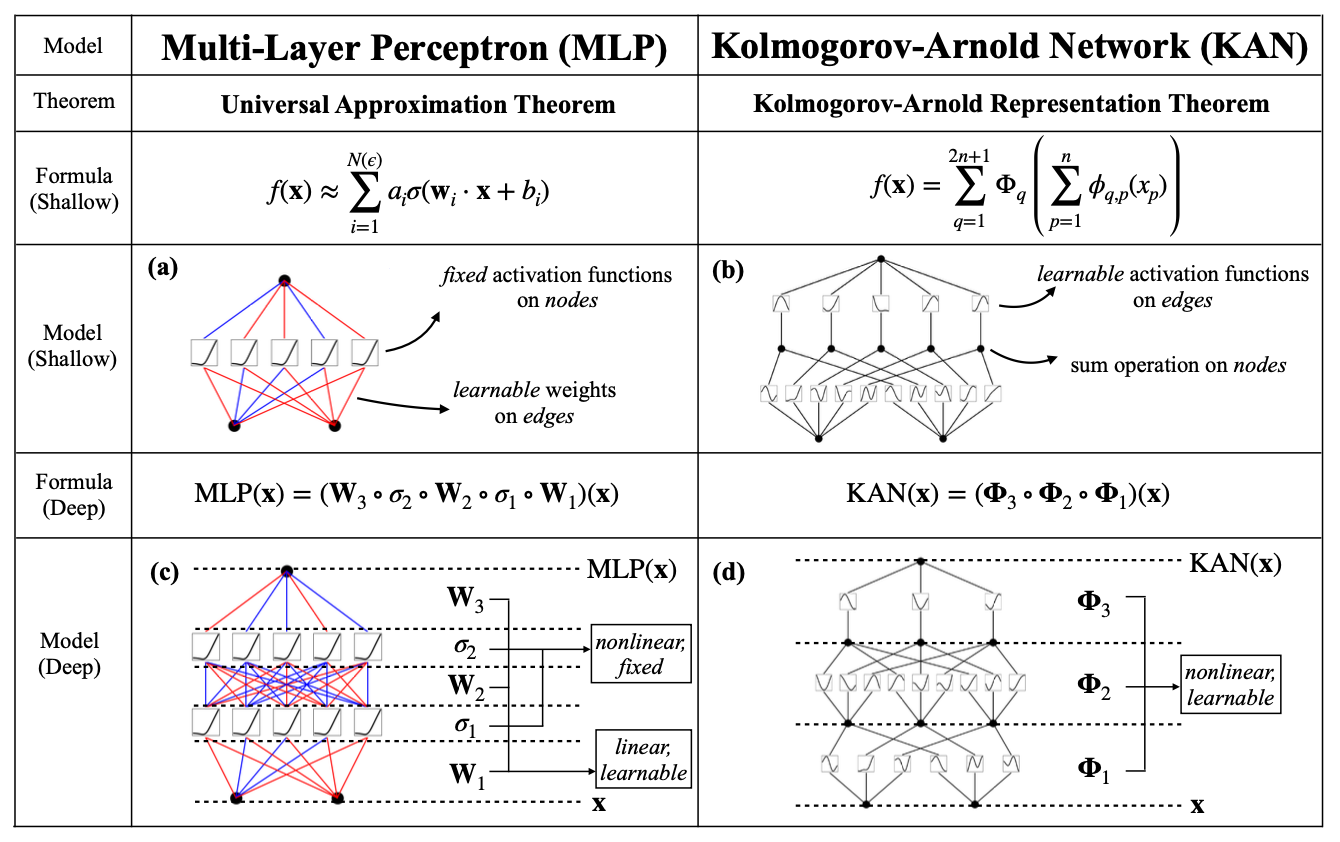
Recall B-spline
Spline function (of order k)
B-spline of order k, which is basis function of splines of order k:
- add constraint
- can be constructed recursively:
KAN Implementation
- Model:
- Initialization
- Update the spline grids on the fly, since activations vary.
Extension1
For Interpretability
- Sparsification loss(
- Pruning by incoming and outgoing score threshold.
Extension1
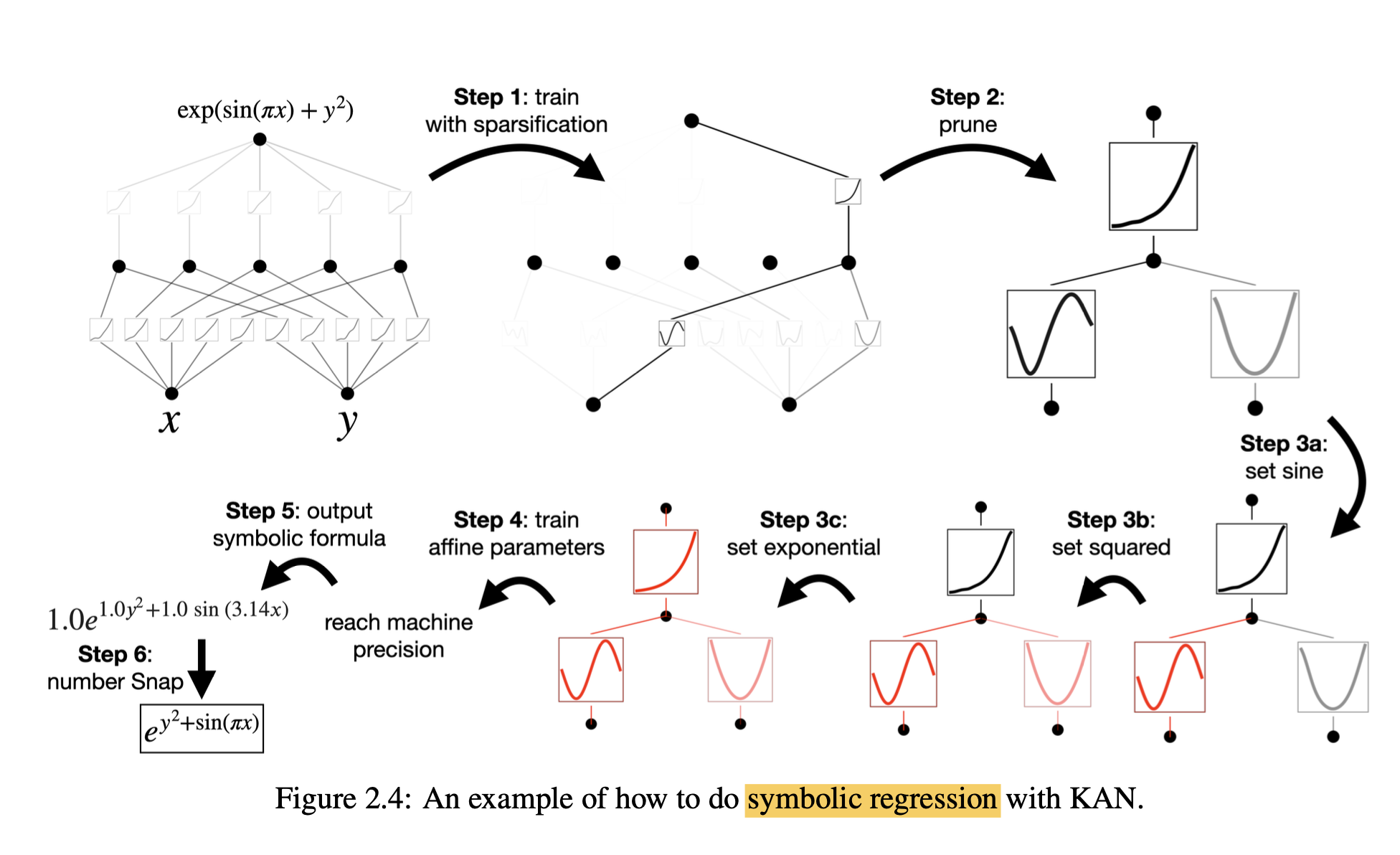
Extension2
For Accuracy: finer grid
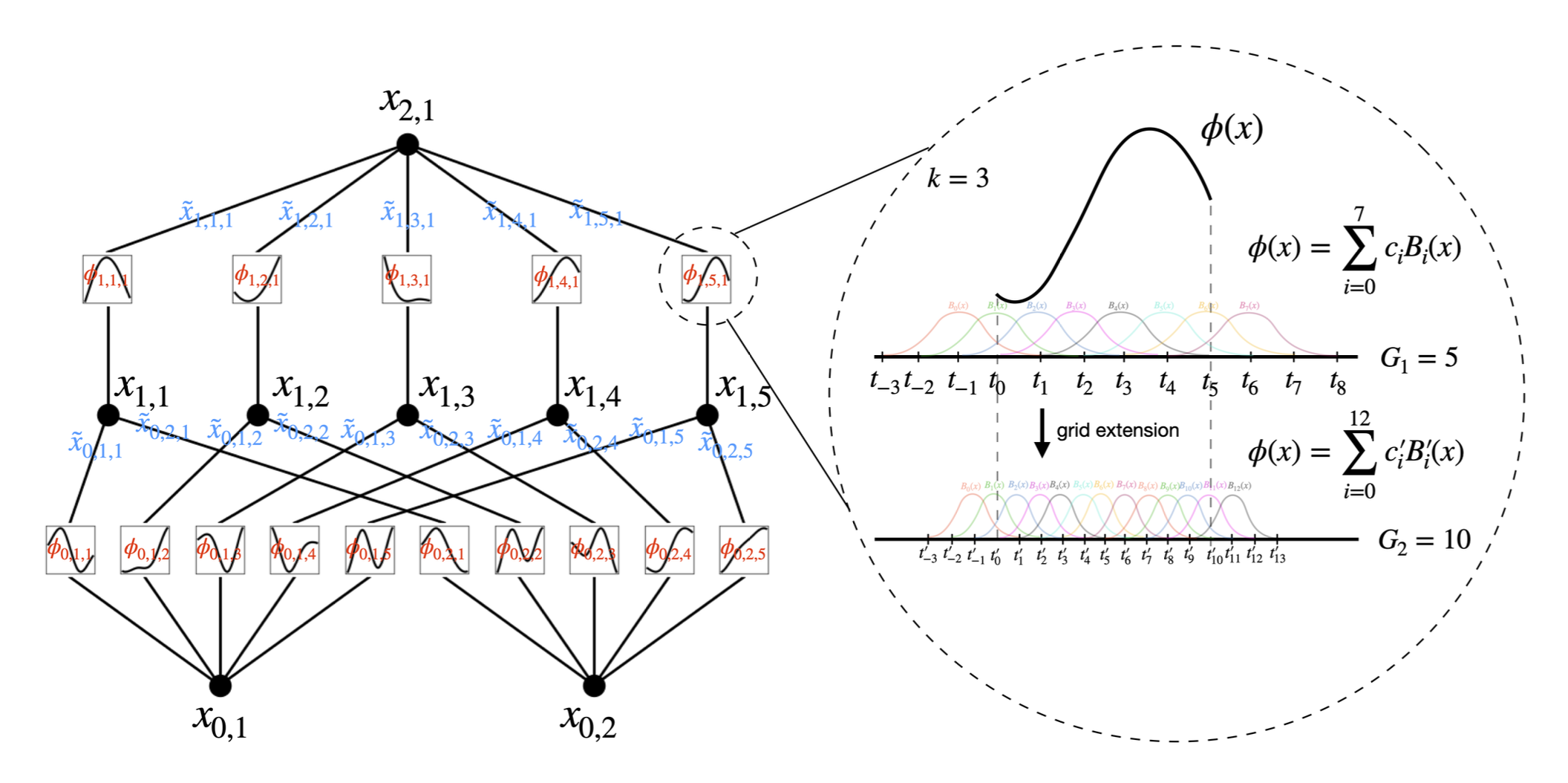
Neural Scaling Laws
Neural scaling laws are the phenomenon where test loss decreases with more model parameters:
where
- KANs can empirically achieved bound
- MLPs have problems even saturating slower bounds (e.g.,
Experiment 1.1 simple functions
- have close form
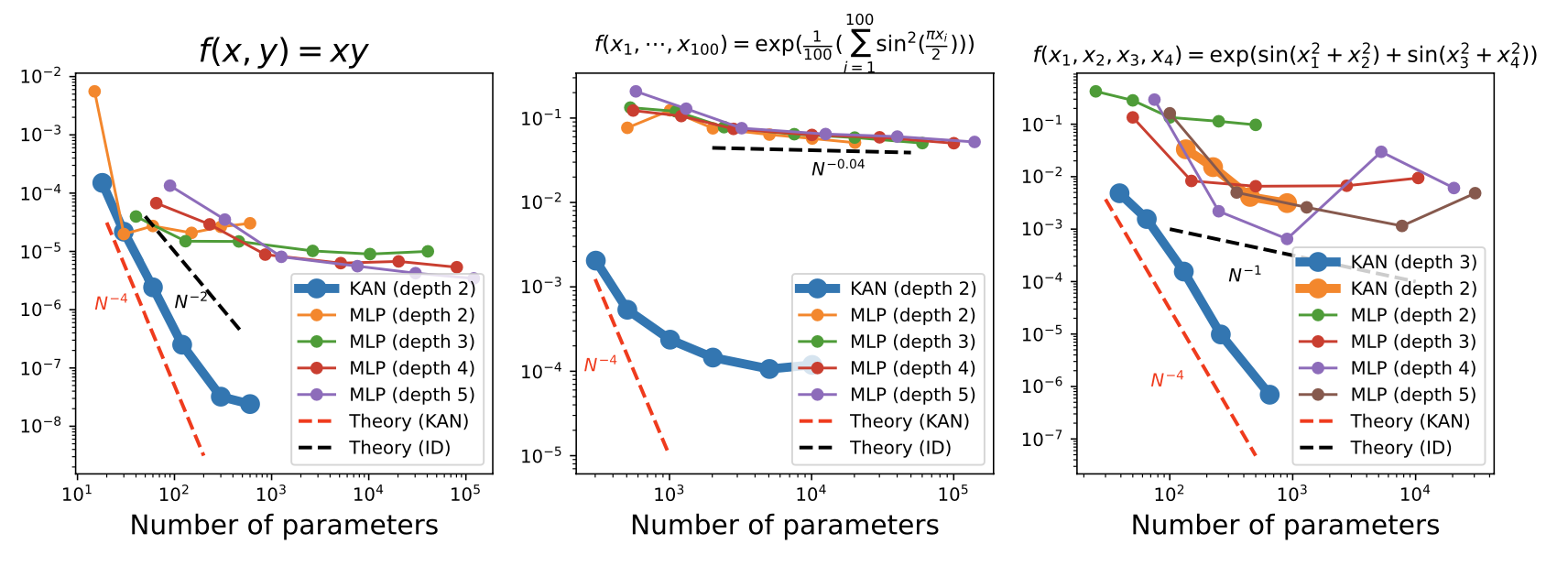
Experiment 1.2 special functions
- no close form
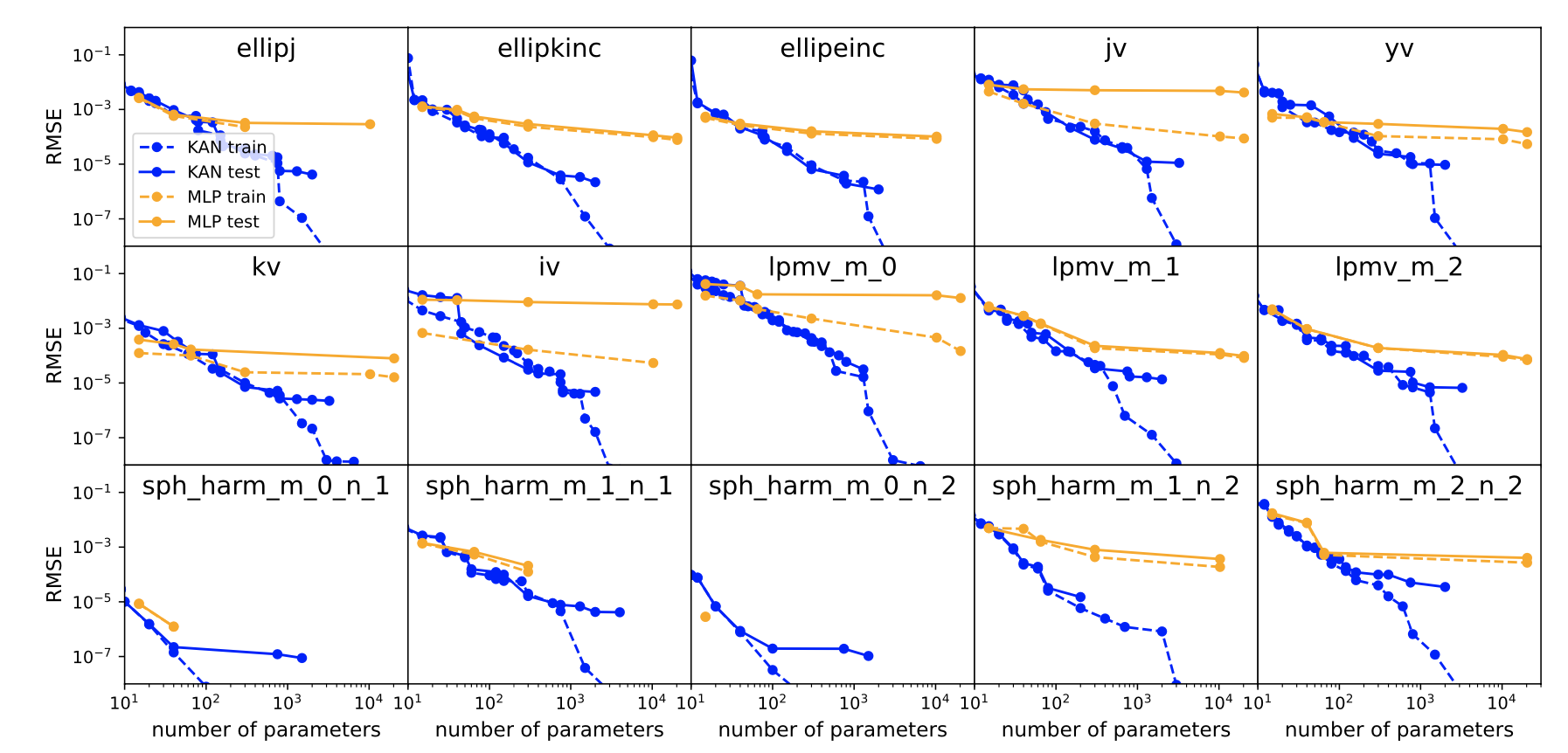
Experiment 2 Solving PDE
For
Consider data from
for which
is a true solution.
Consider training loss:
Experiment 2 Solving PDE
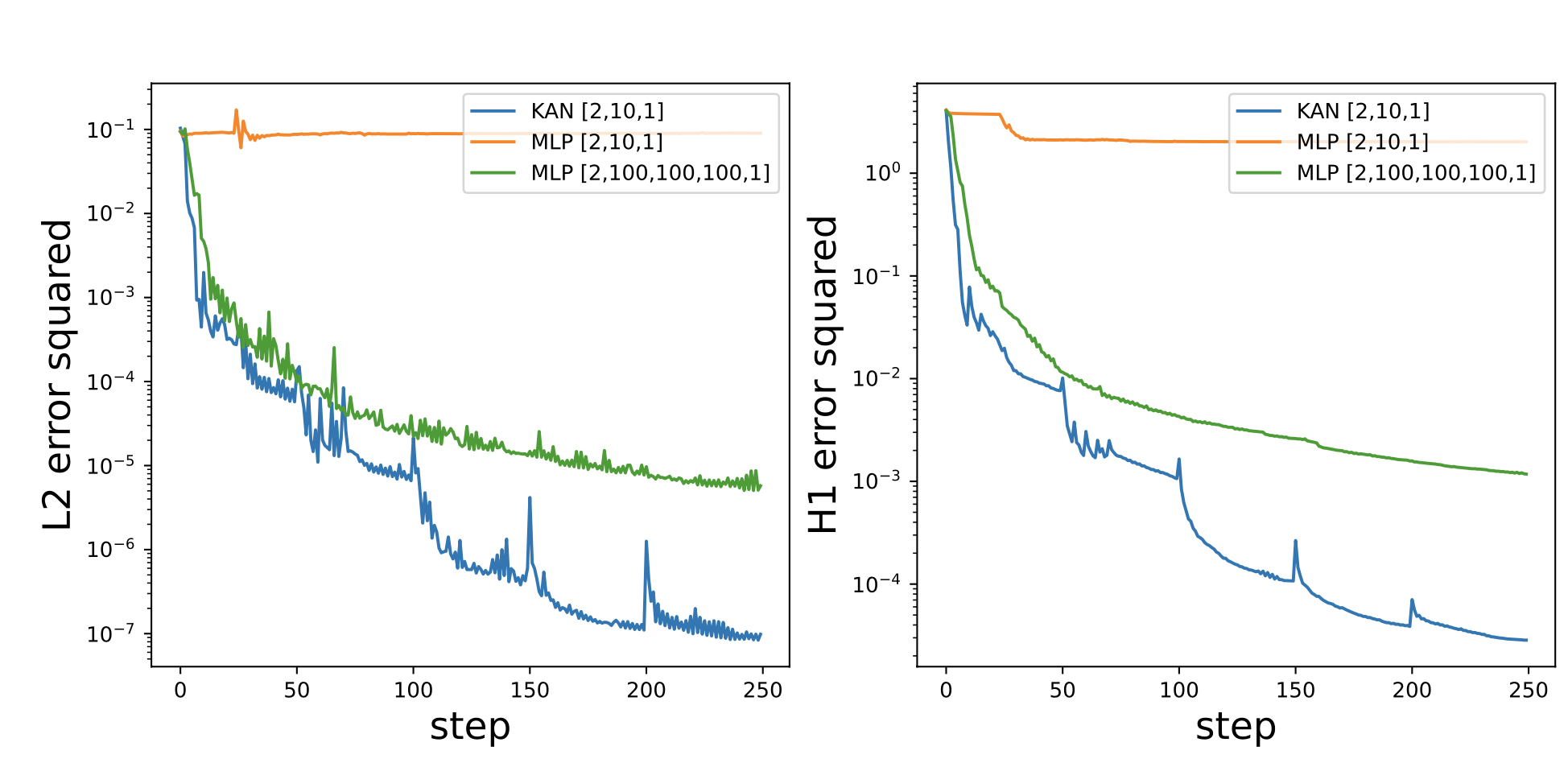
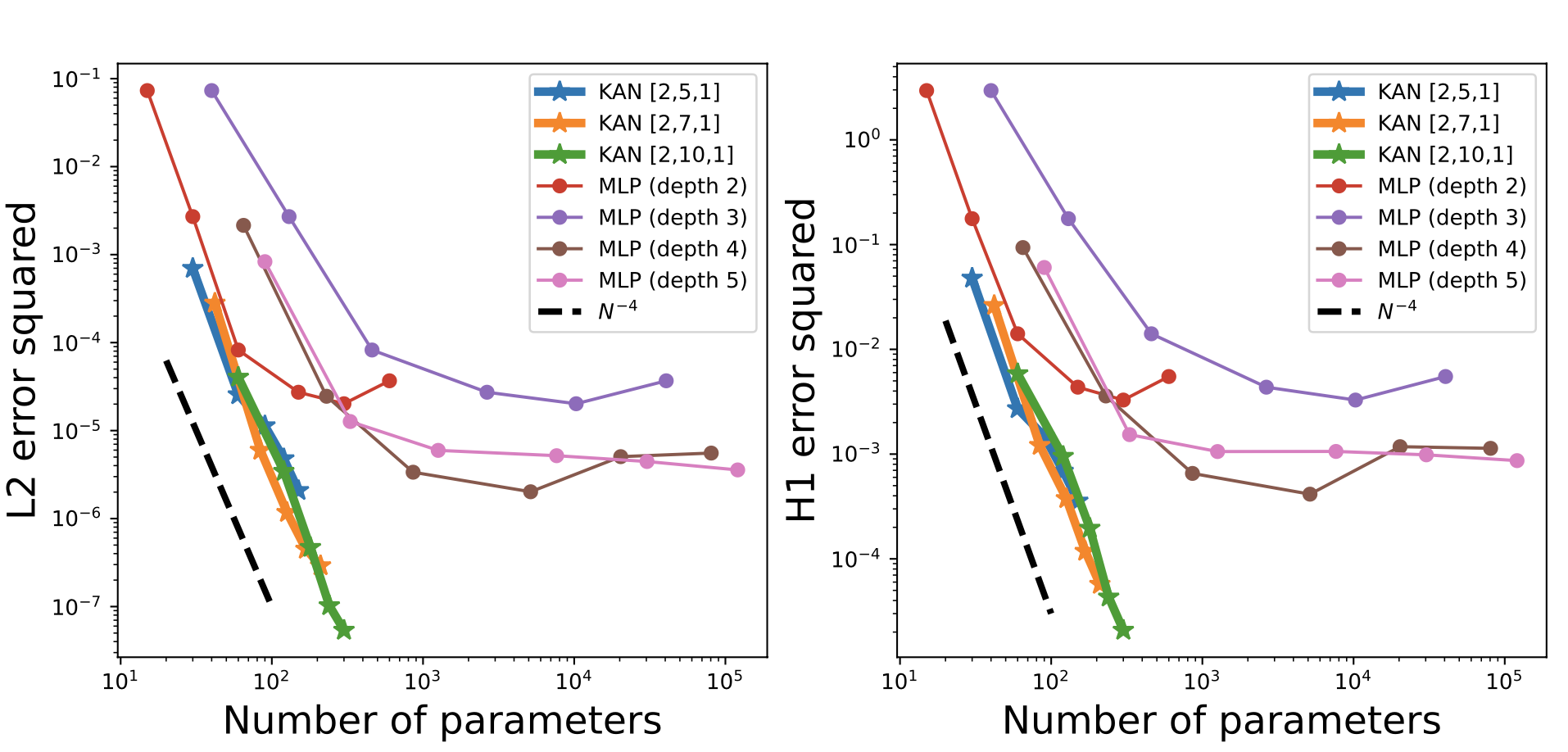
Experiment 3 Continual Learning?
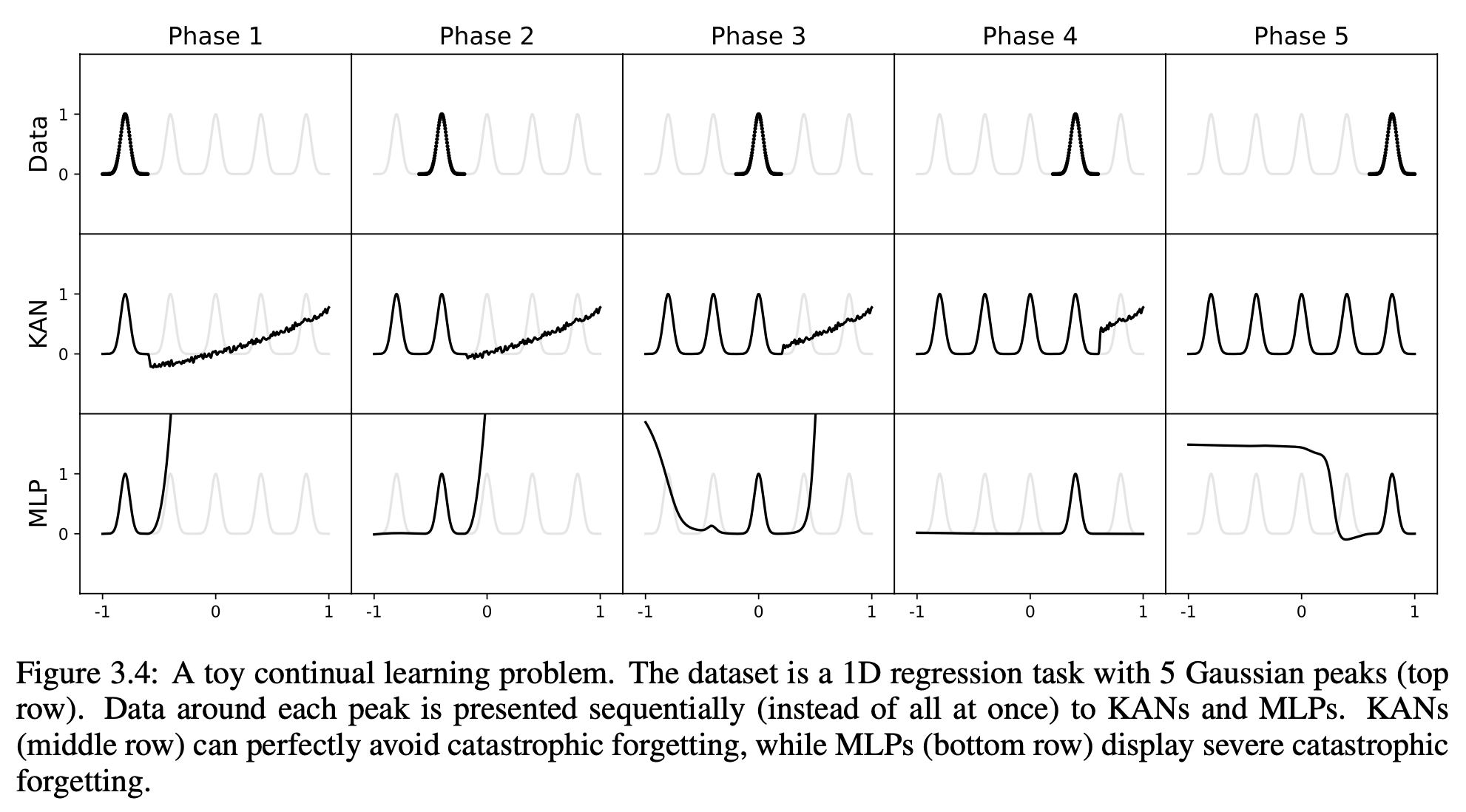
Experiment 4 Supervised or not
- Supervised task: find
- Unsupervised task: find
- e.g.
- e.g.
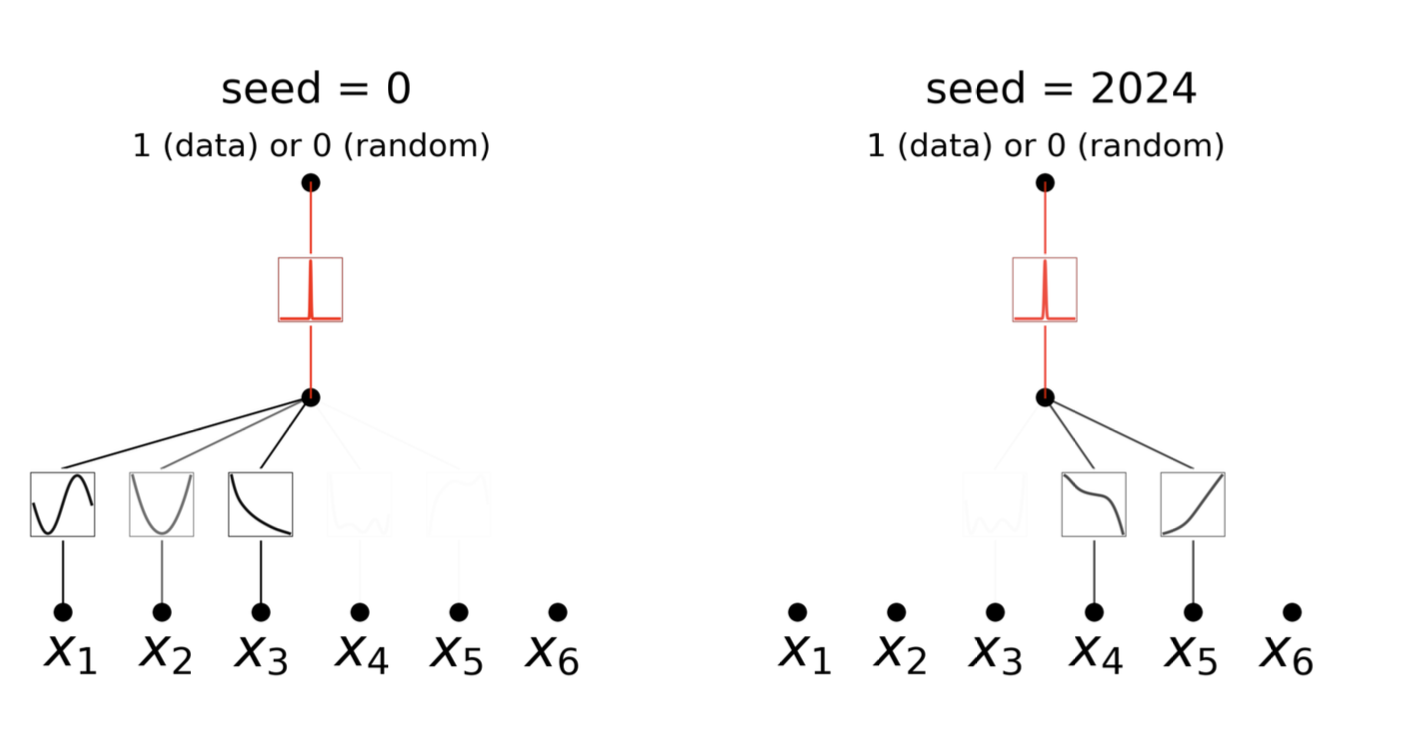
Application 1 Knot Theory (intro)
- How to do classfication?
- by crossings: prime knots

Application 1 Knot Theory (invariants)
- Knots have a variety of deformation-invariant features f called topological invariants, e.g. Jones polynomial.
- basic deformation:
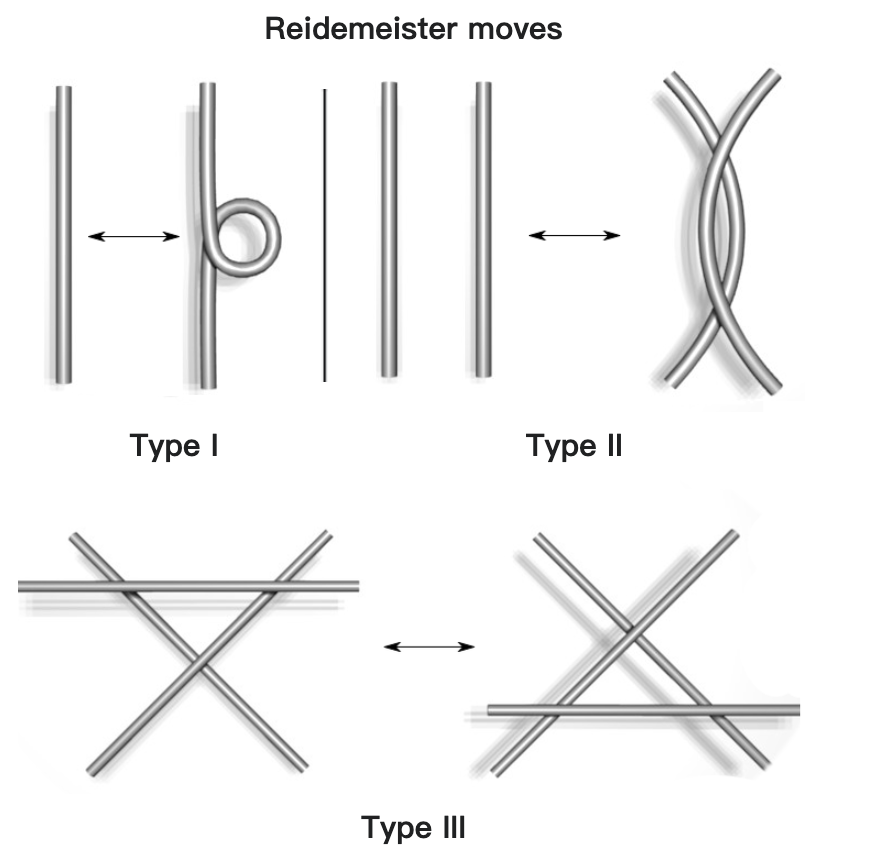
Application 1 Knot Theory(DeepMind)
- Davies, A., Veličković, P., Buesing, L. et al. Advancing mathematics by guiding human intuition with AI. Nature 600, 70–74 (2021). https://doi.org/10.1038/s41586-021-04086-x
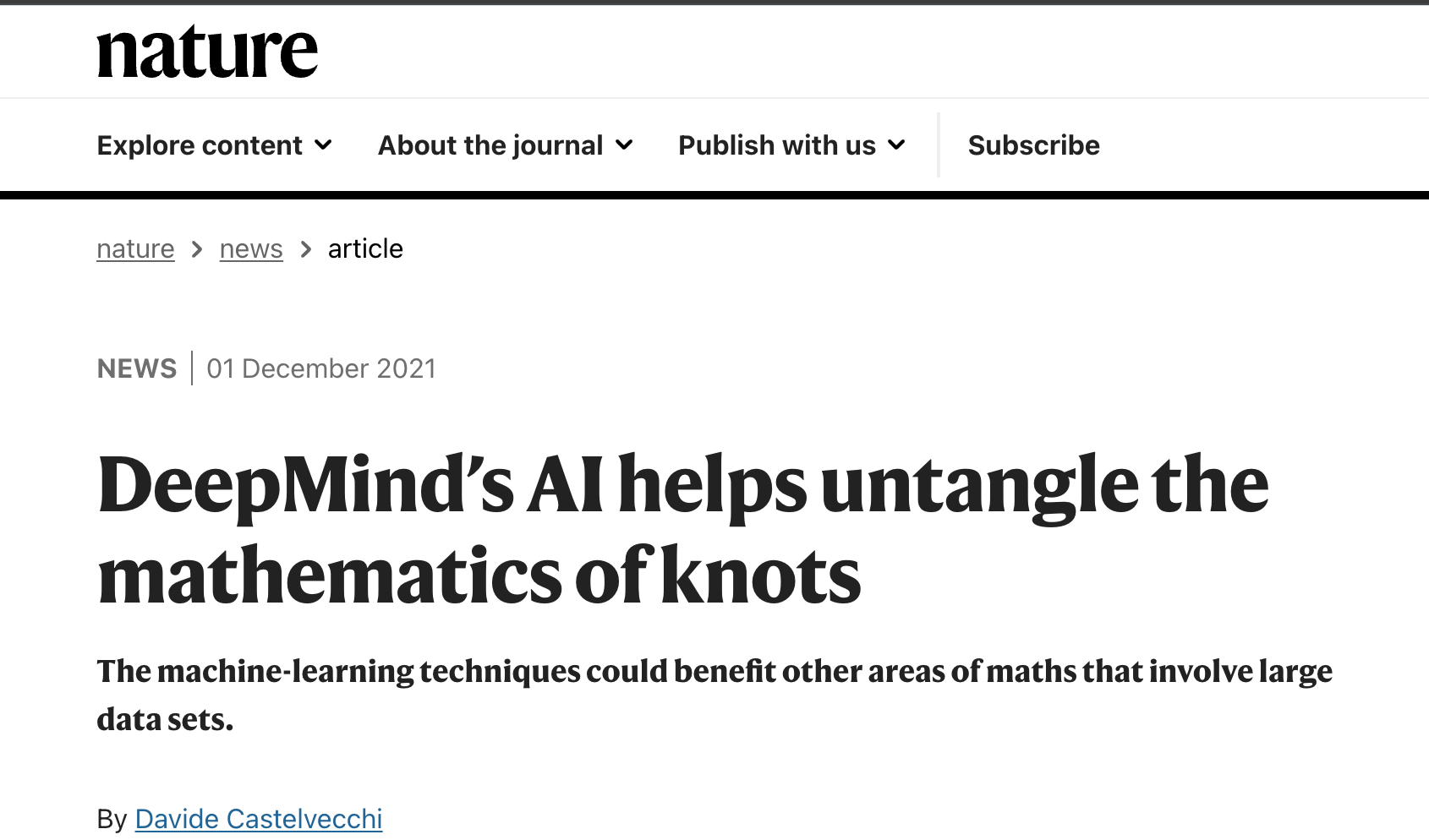
Application 1 Knot Theory(results)
Two main results:
-
They use network attribution methods to find that the signature
-
Human scientists later identified that
KANs not only rediscover these results with much smaller networks and much more automation, but also present some interesting new results and insights.
Application 1 Knot Theory(KAN on 1.)
To investigate 1. , they treat 17 knot invariants as inputs and signature as outputs:
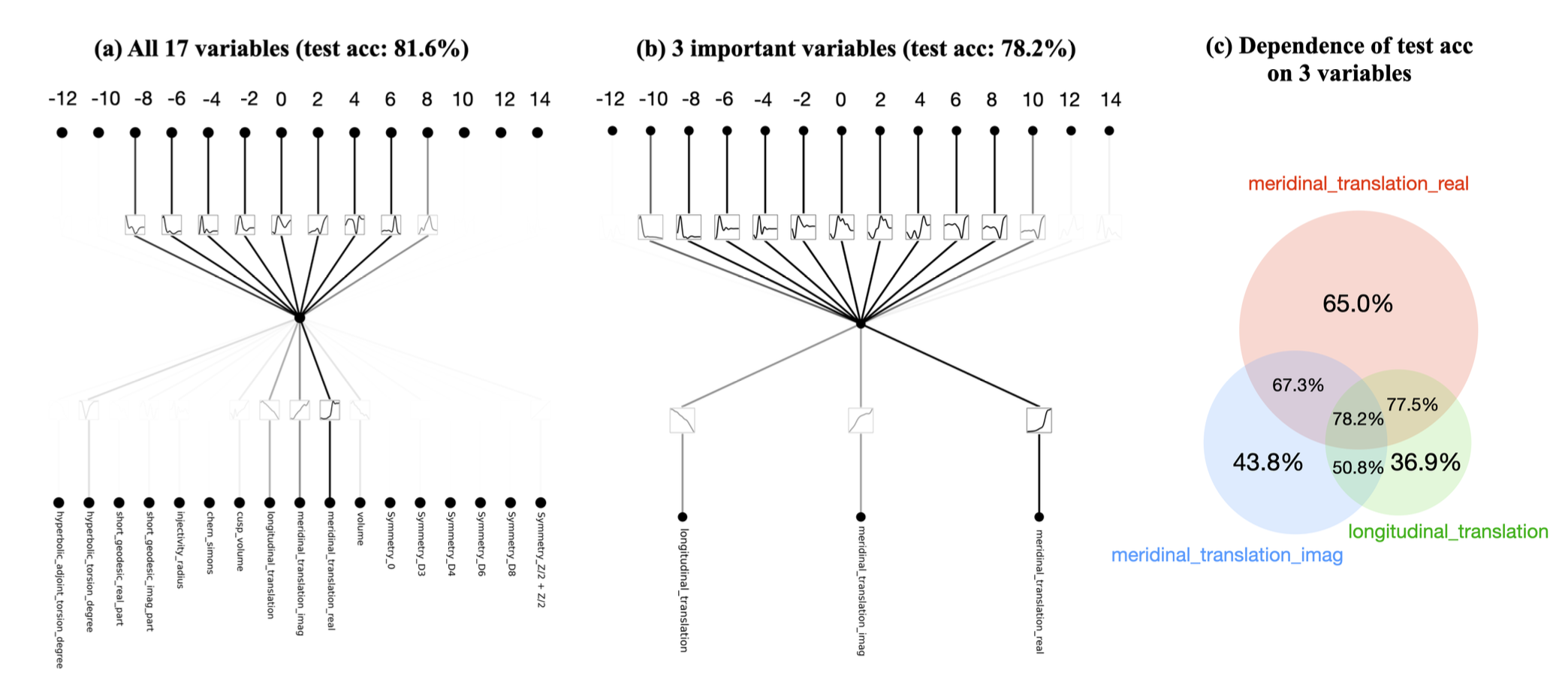
KANs have less parameters(2e2 v.s. 3e5), but behave better on accuracy(.816 v.s. .78).
Application 1 Knot Theory(KAN on 2.)
To investigate 2. ,they formulate the problem as a regression task.
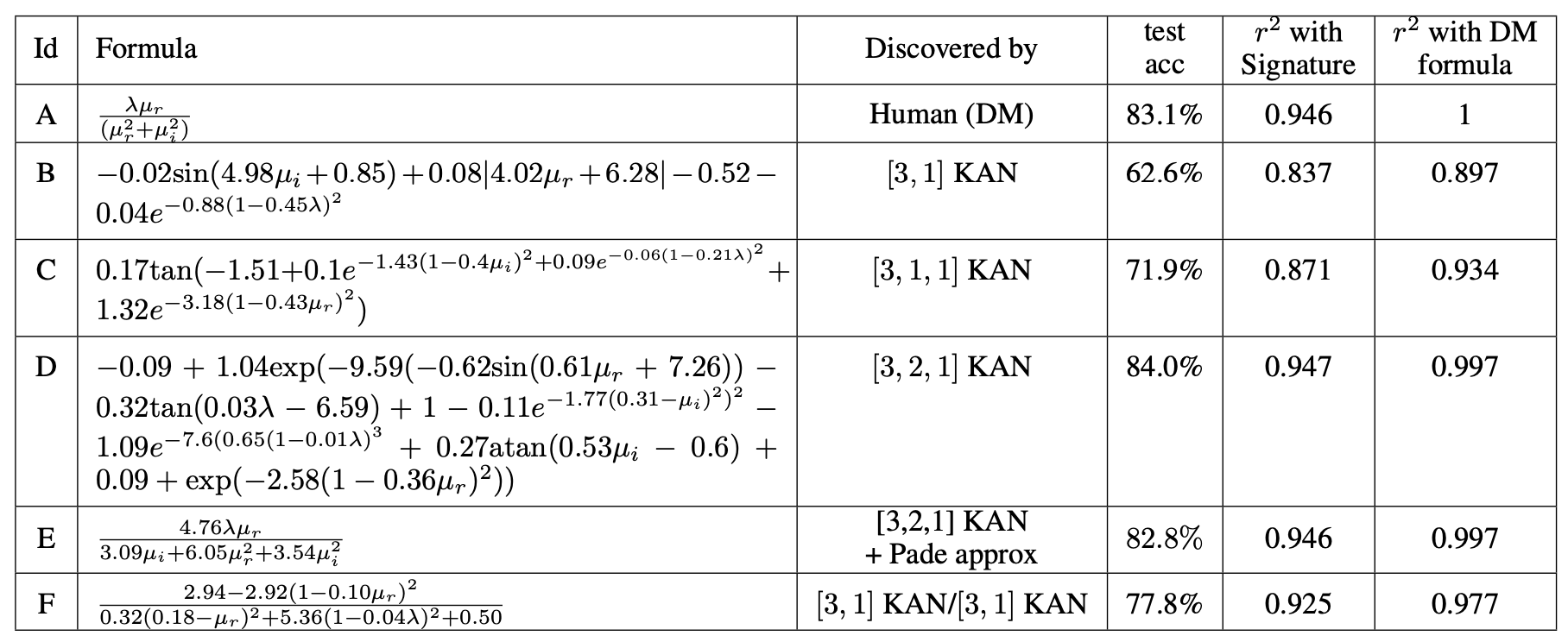
Application 1 Knot Theory(KAN new)
- KAN find some results:
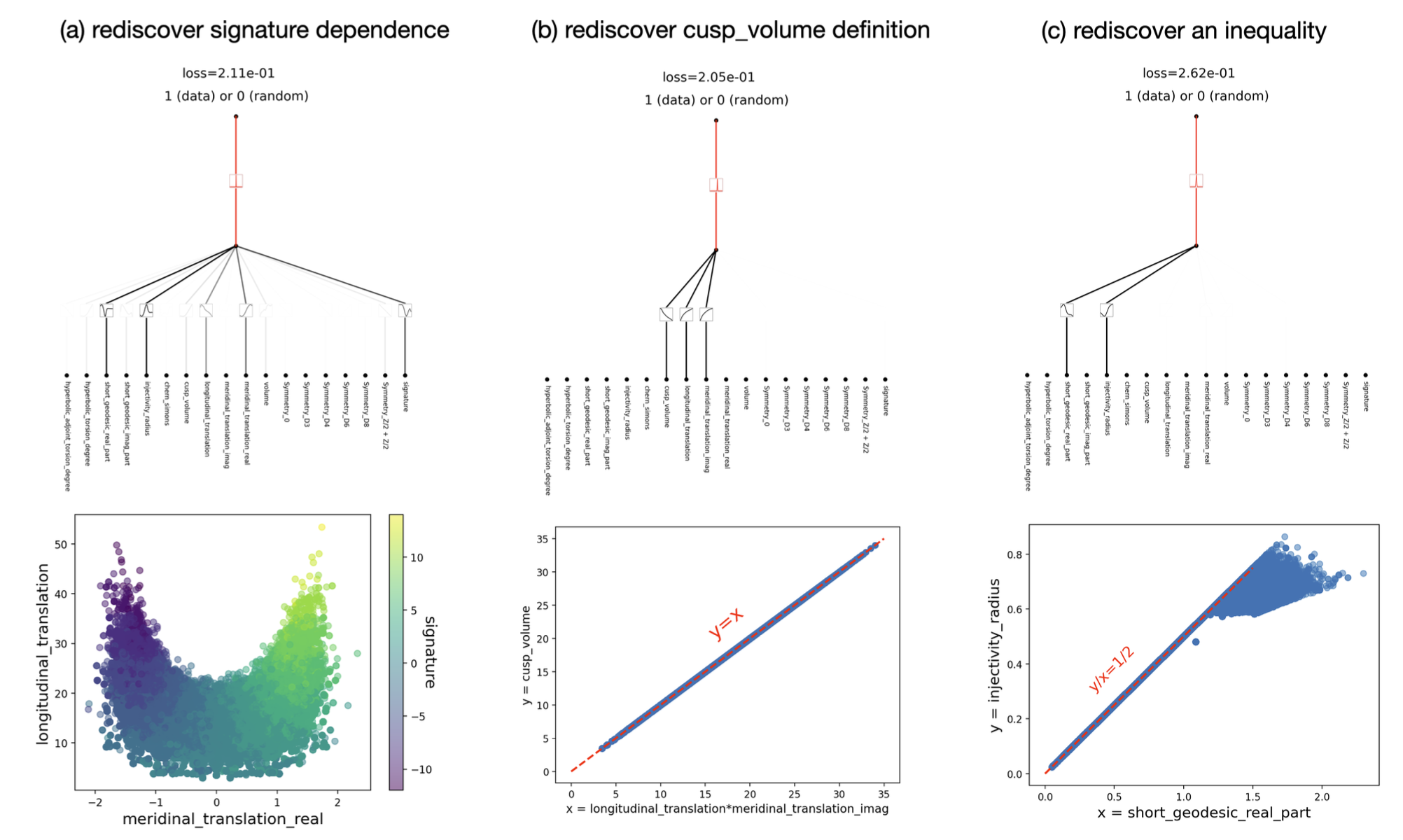
Application 2 Anderson Localization
Due to time constraints, we'll skip this part. TO MUCH PHYSICS!
so far so good, but ...
-
KANs are usually 10x slower(in calculation) than MLPs given same num of parameters.
-
Are KANs just RBF Networks? GitHub Issue#162
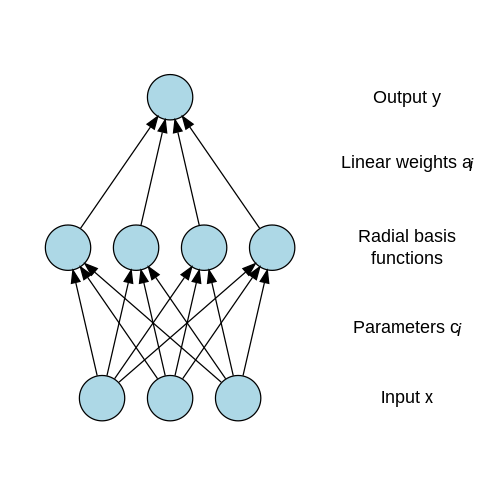
Discussion
- Since KANs work, maybe K-A theorem can be extended?
- Maybe we can use some other basis functions instead of B-splines, e.g. RBF, Fourier basis.
- Hybrid of KANs and MLPs, half fixed activation functions.
- KAN as a "language model" for AI + Science??
THANKS.